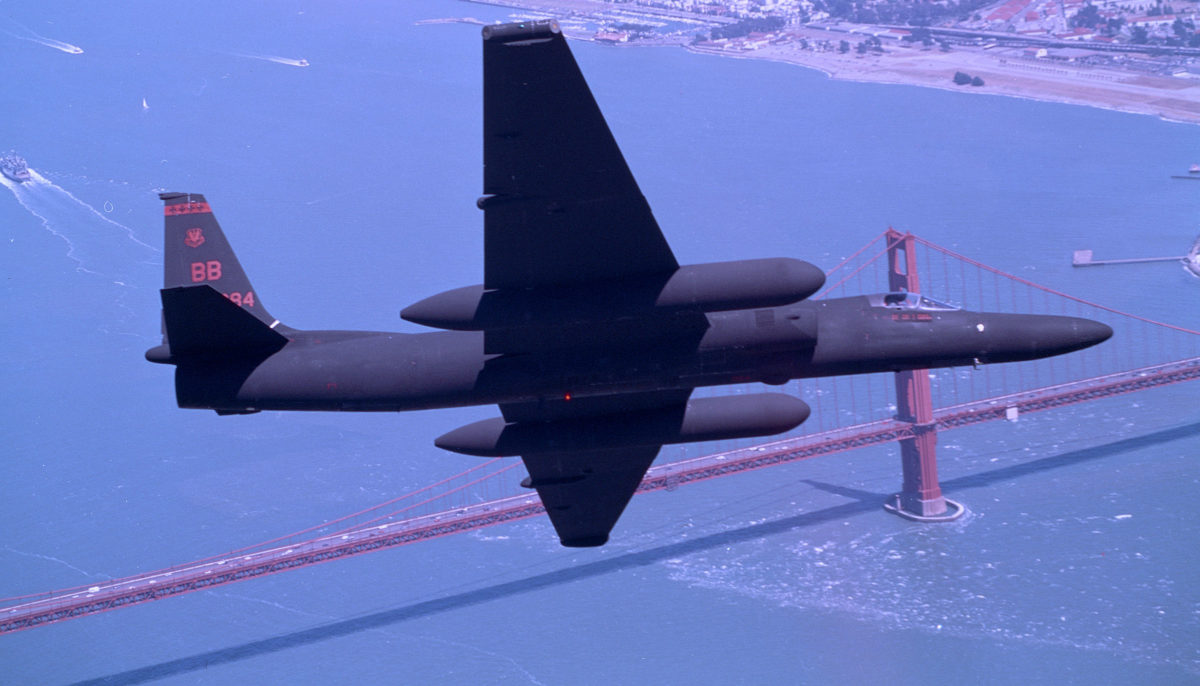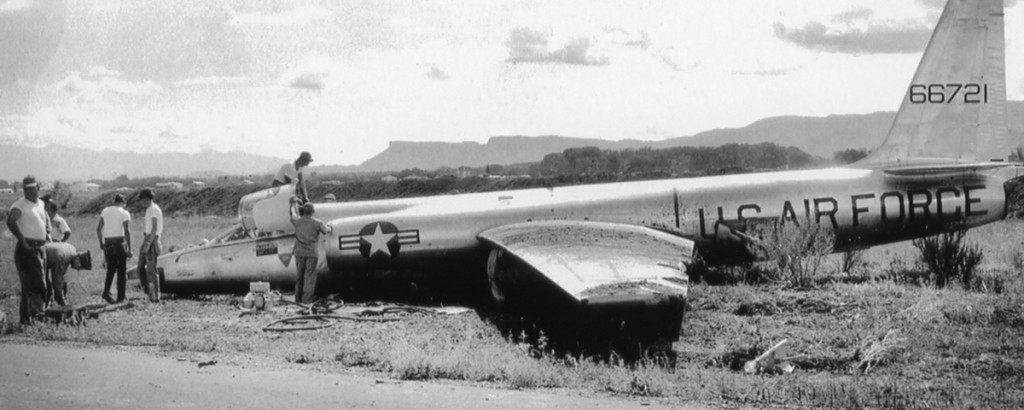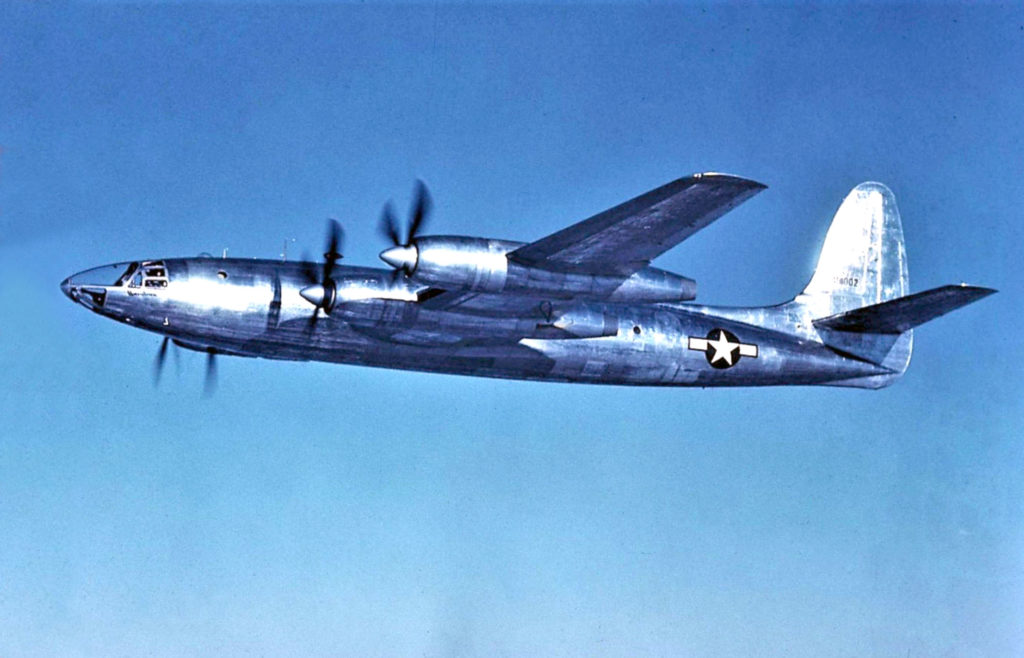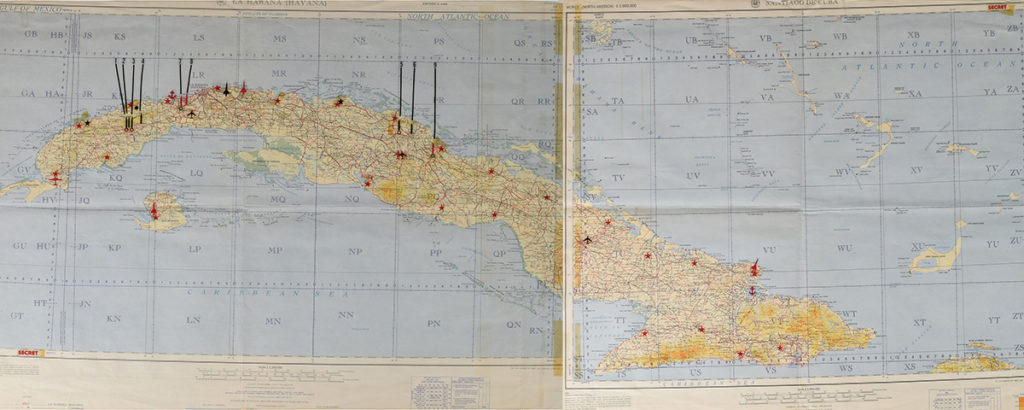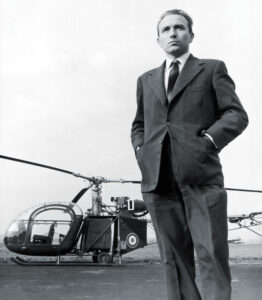Behold the Lockheed U-2, as imperfect an airplane as has ever flown. A hastily designed stopgap intended to fly for two or perhaps four years at most, its fragility and truculence a destroyer of airframes and killer of pilots at an unprecedented rate. An airplane so difficult to land that YouTube is filled with videos of careening U-2s being chased by landing coaches in Camaros and Firebirds. A quasi-military spyplane that was originally ordered and paid for by civilians—that in fact was largely postulated and laid out by MIT and Harvard academics and a Cambridge entrepreneur, nary a pilot nor aeronautical engineer among them.
Some in the U.S. Air Force called it the Useless Deuce, yet the U-2 became one of the most important aircraft ever to fly. The U-2 kept us out of World War III with the Soviet secrets it revealed during the 1962 Cuban Missile Crisis. And though its Soviet overflights ended in disaster—the infamous Francis Gary Powers shootdown in May 1960—the U-2 had already proved that Americans needn’t have worried about Soviet bombers targeting us. Mutually assured destruction, if it ever came to that, meant the U.S. would assuredly destroy the USSR.
Sixty years after the U-2A entered service, the latest model, the U-2S (an improved version of the highly modified U-2R), continues to fly carrying sensors undreamed of during the U-2’s photorecon glory days. Its intended successor, the SR-71, quickly came and went at Mach 3, and is today parked in museums. Surveillance satellites that supposedly could read license plates from space have yet to fully replace the U-2, and this remarkable reconnaissance platform’s real successor will be a drone—a UAV based on, yes, the U-2R.
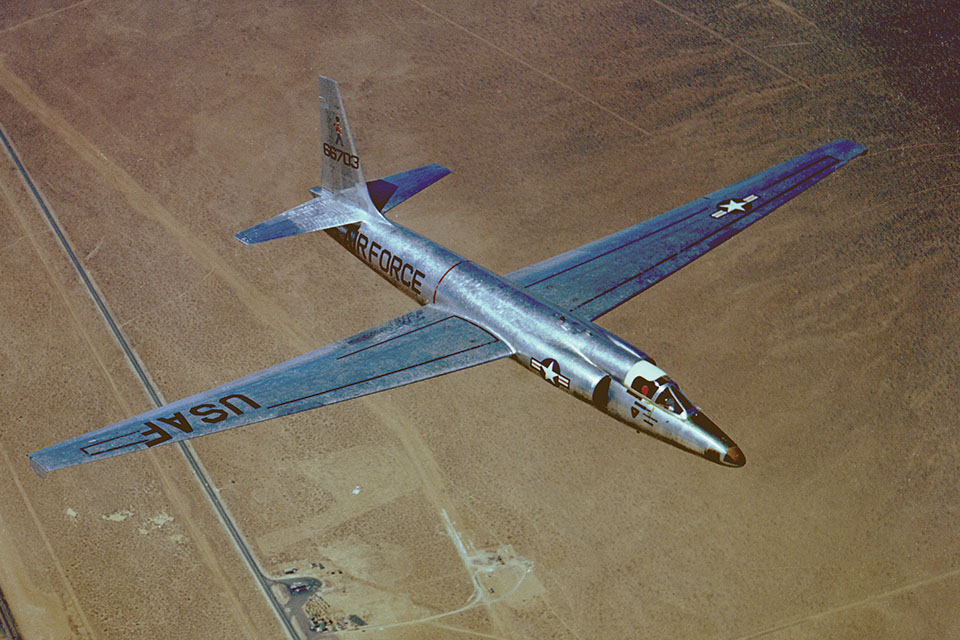
During World War II, renewed interest in photoreconnaissance led to the conversion of fighters and bombers to specialized recon ships. Yet there was still no such thing as a dedicated U.S. reconnaissance design, though Howard Hughes’ XF-11 single-seater and Republic’s four-engine XF-12 Rainbow were benighted attempts to fill that role. In the mid-1950s, strategic aerial reconnaissance near and sometimes over enemy territory was still carried out by converted bombers, the most specialized of them being the Martin RB-57D and F—big-wing, high-altitude versions of the English Electric Canberra. Still, the B-57 had to fly at altitudes in the mid-50,000s (the final RB-57F version could under ideal conditions cruise at 65,000 feet), which left it vulnerable to interception.
Enter the Lockheed U-2, the very first dedicated U.S. recon type ever to go into production. Its genesis can be traced back to a paper written in 1953 by a mid-level officer at the Air Force’s Wright-Patterson development center, Major John Seaberg. He postulated that rapidly improving turbine-engine technology plus high-aspect-ratio wings on a very light airframe could achieve cruise altitudes high enough to be—at least at the time—immune from interception.
Successful WWII reconnaissance aircraft such as the de Havilland Mosquito and PR Spitfire had relied on speed as their salvation, since they couldn’t fly any higher than specialized German fighters. Piston engines and the propellers they drove met immutable altitude limitations at about 45,000 feet for an operational airplane. But jets would continue to breathe every molecule of oxygen that existed in the stratosphere. Seaberg believed that jet engines would soon achieve high enough power outputs that even though only a tiny percentage of their sea-level thrust would be available at extreme altitudes, just 7 percent of total power could sustain an optimized high-altitude jet aircraft. If a jet produced 10,000 pounds of thrust at sea level, 700 pounds at altitude would be enough to power a light, low-drag airplane with a high-altitude wing and airfoil, and to power it at what in the U-2 turned out to be 0.80 Mach.
Three key elements of Seaberg’s proposal were that light weight could be achieved by ignoring military requirements, since a high-altitude recon airplane would have no air combat mission; by building the aircraft to very low load standards, for the same reason; and by eliminating the heavy landing gear entirely. Lockheed Skunk Works engineers, led by the innovative Kelly Johnson, remained true to the first two missions and tried to attain the third by designing the simplest possible single-strut main gear, which ended up weighing just 206 pounds.
It was thought the U-2 would fly too high for Soviet radar to track it. How could this be, since the U-2 would be flying just 13 miles up—certainly within the range of even the most primitive radar? But surveillance radar points at the horizon, not straight up, and the CIA figured the top of its sweep was about 11 degrees above horizontal. Sixty miles out, coverage was about 5,000 feet of altitude per degree, or 55,000 feet, and the closer an airplane got to the radar station, the more that ceiling lowered.
Recommended for you
Unfortunately for the U.S., the Soviets were improving their radar faster than anticipated, at least in part by using captured German technology. Ranges of 80 miles and more were being achieved, which would have put the top of the scan at U-2 altitude. So U-2 overflights of Eastern Europe and the Soviet Union were tracked from the very beginning.
Lockheed tried a variety of radar-foiling measures on the U-2, from radar-absorbent foam-rubber coatings to networks of antenna wire tuned to specific radar frequencies, but none worked. If nothing else, it convinced Johnson that the only way to achieve true radar invisibility was to design an airframe from the outset for stealth, which is exactly what Lockheed would do with the A-12/SR-71 Blackbird.
Perhaps the most persistent myth about the U-2 is that it was based on Lockheed’s F-104, which was being prototyped just as U-2 design efforts were gaining traction. The Air Force had asked Bell, Fairchild and Martin to submit proposals for a high-altitude recon platform, figuring that smaller companies would give the project more serious attention and that Lockheed had plenty on its plate, what with the C-130 Hercules and F-104 programs both active. Kelly Johnson inevitably got wind of the deal, however, and submitted a Lockheed concept: the CL-282. Never called U-2, it was a stripped XF-104 fuselage, cockpit and T-tail empennage fitted with sailplane-size 10:1-aspect-ratio wings and using the 104’s powerful GE J73 engine, albeit shorn of its afterburner.
The Air Force had already accepted the Bell design, called the X-16 to make snoops assume that it was just another Bell research X-plane. They rejected the CL-282, largely because of doubts about the suitability of its unproven J73 engine. The blue-suiters insisted on the Pratt & Whitney J57 that Bell had chosen to power the long-wing, twin-engine X-16.
The X-16 was a twin because the Air Force looked upon it as a multi-mission aircraft—a “real airplane,” in their view, with an armored and pressurized cockpit and sturdy tricycle landing gear. Perhaps someday it could carry guns and bombs. But the second engine added weight and doubled the chance of a flameout or engine failure. In either eventuality, the airplane would have been lost over Soviet territory, since it would have had to descend to MiG-21 altitude—probably around 35,000 feet—either to cruise on half power or to attempt a restart. This, in fact, remained a concern with the single-engine U-2. Its chosen power plant was susceptible to flameouts at altitude. A number of U-2s disappeared over China during the 1970s, and flameouts could well have been the reason.
In any case, Johnson and his small team of Skunk Works engineers went back to their drawing boards and designed an all-new airplane, which became the U-2. They threw out everything F-104–derived, and as Johnson later wrote in his autobiography, “The only equipment we might retain from the F-104 might be the rudder pedals.”
The Air Force continued to resist the Lockheed proposal. But the U-2 had fans at the CIA, though the civilian agency’s top leadership still needed some convincing. The spooks had learned to their dismay that the Air Force had little interest in launching recon flights in answer to the CIA’s needs or schedules. The spies needed their own air force.
What turned the odds in Lockheed’s favor was a consensus among some influential scientists who had the ear of the Eisenhower administration. Key among them was the Beacon Hill Study Group, a coterie of MIT and Harvard academics plus engineer/entrepreneur Edwin Land, inventor of the Polaroid camera. In June 1953, the Beacon Hill band urged the government to develop a vehicle to surveil the Soviet Union from a very high altitude with a good turn of speed, carrying the highest-resolution cameras possible.
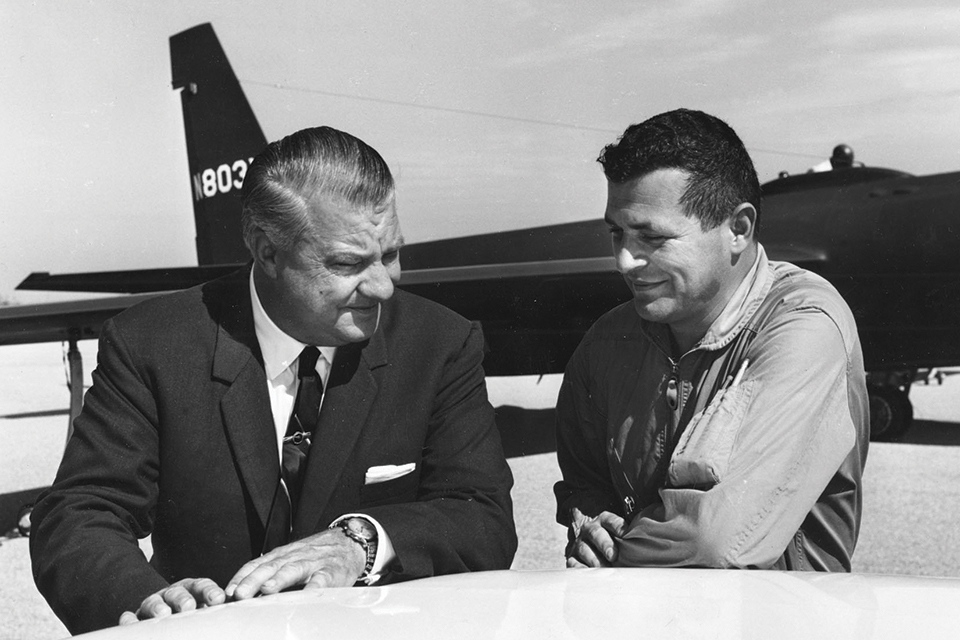
CIA director Allen Dulles helped persuade President Dwight Eisenhower that Soviet overflights would be safe because if a U-2 was shot down, the crash from such a height would render the wreckage unidentifiable and the pilot would never survive. Powers’ downing in 1960 proved Dulles wrong on both counts, but it is baffling to think that he somehow assumed every dataplate, serial number and manufacturer marking would be vaporized. Nevertheless, Ike bought into the story.
Actually, U-2s that were shot down or experienced airframe failures typically maple-seeded down in a flat spin, with one wing gone and the other intact, and hit the ground with low forward speed and a relatively low rate of descent, leaving lots of instantly identifiable pieces for Dulles and his gang to ponder.
The U-2 had three equally important major components: a light and low-drag single-seat airframe, an engine that could produce sufficient thrust to keep it airborne at extreme altitude and a camera-suite payload that would make the mission worthwhile. Harvard astronomer James Baker, designer of the U-2’s optical systems and lenses, told Johnson that without superb cameras the U-2 was nothing more than a powered sailplane. Johnson in turn reminded Baker that if Lockheed couldn’t keep the gross weight under control, the finest cameras in the world wouldn’t be going anywhere.
The Eisenhower administration had become galvanized by the Soviet Union’s explosion of a hydrogen bomb in August 1953, long before anybody expected them to. Less than a year later, the existence of the Myasishchev M-4 intercontinental bomber, NATO code-named Bison, became public. The Bison was assumed to be the equivalent of the Boeing B-52, and rumors spread that the Soviets had hundreds of them (they actually had 20). This plus the Beacon Hill report persuaded Eisenhower to approve development of the U-2, since he needed to know for sure whether there truly was a bomber gap between Soviet and U.S. fleets. And it was the president who ordered that the CIA control the airplane. Air Force chief of staff General Nathan Twining was furious. He demanded that Strategic Air Command run the show, but Eisenhower pointed out that if a USAF pilot flew over the Soviet Union, it would be an act of war. Lieutenant General Curtis LeMay, then in charge of SAC, said he had no interest in any case in an airplane that didn’t have bombs or guns.
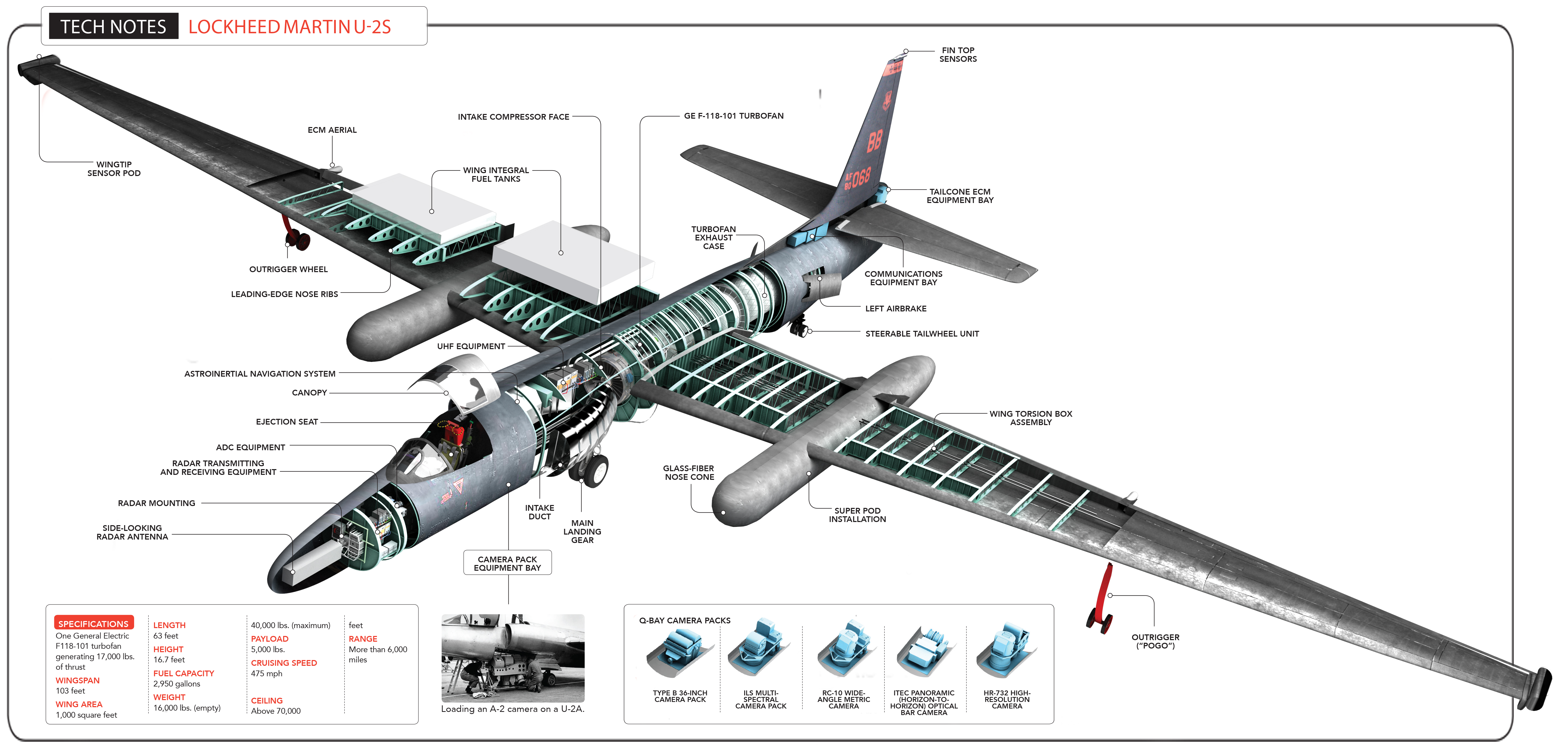
The CIA initially tried to train NATO pilots to fly the U-2. The first—and last—batch were Greek, and they turned out to be untrainable, lacking the high-performance background required to fly such an enormously demanding airplane. Ultimately, the only foreign pilots who would ever fly U-2s were a group of talented Nationalist Chinese ex–F-86 pilots and a small number of RAF aviators.
The CIA’s U-2 pilots initially came from the Air Force Reserve and SAC, which at the time had its own fighter escort wings flying Republic F-84s; their pilots were experienced at long-range solo navigation. Since they couldn’t be military but didn’t want to throw away their Air Force careers, the chosen pilots officially resigned from the Air Force and were hired by Lockheed as civilian “test pilots” but secretly kept their military seniority. When they were done flying the U-2, their resignations were revoked and they rejoined the Air Force at whatever rank, salary and seniority they would otherwise have attained. The ruse was called “sheep-dipping.”
The U-2 required extreme finesse in cruise, for the margin of airspeed at altitude between stalling and overspeeding—called “coffin corner”—was typically only 7 knots, sometimes as little as 4. At 70,000-plus feet, simply turning a U-2 was a feat. Bank just slightly too steeply and the inside wing would stall while the outside wing went through never-exceed speed. Either a stall or busting maximum Mach would almost certainly lead to the airplane’s shedding its wings or empennage, the latter a unit held to the tailcone by three five-eighths-inch bolts. The wings were also bolted to the fuselage, like many a sailplane’s, without a through-spar, and they were ribless, which is one reason they were so light and fragile. A U-2 wing consisted of three spars, some aluminum tubing to stiffen the structure and thin skins. On some parts of the fuselage, the skinning was just 0.02 inches thick—the thickness of three sheets of printer paper.
The lack of a continuous wing spar allowed the original U-2 to have a substantial and unobstructed payload bay for big cameras right on the airplane’s center of gravity. One of the simple but imaginative features of that camera bay was that the film—a very light Mylar-based stock developed by Kodak for the U-2—unspooled in one direction for the right-side oblique cameras and in the opposite direction for the left cameras. Since there was more than a mile of film on each side, that would have meant a drastic CG change during a flight without the counterbalancing payout.
U-2 pilots wore the world’s first spacesuits, and they were both pioneering and imperfect. Initially made of unyielding rubberized fabric, those partial-pressure suits created rubbing points all over a pilot’s body, particularly on the neck, where the helmet attached to the suit. Since every high-altitude mission required an hour and a half of pre-breathing pure oxygen to purge the body of nitrogen, a U-2 pilot could easily spend 12 hours totally sealed into his suit and helmet. The suits had no provisions for urinating or defecating, so some pilots wore diapers, while others used a catheter. (The suits were improved and are today far more comfortable full-pressure suits.)
The U-2 was famously demanding to land, in part because it came at the end of a long, difficult flight, in a blister-making suit and a cockpit with minimal visibility, trapped in a fishbowl helmet. But even at idle, the J57 had enough thrust in ground effect to keep the U-2 flying forever. One pilot reportedly said it was “like trying to land a potato chip.” The only way to do it was to throw out as much drag as possible—landing gear, but there wasn’t much of it, and four big single-slotted Fowler flaps—and then gently tickle the airplane into a high-drag stall angle of attack, but as close to the ground as possible. A full-stall classic taildragger landing was ideal, although in a U-2 it would be two points rather than three. The U-2 was fragile enough that dropping it in from several feet could break the airframe, either at a wing root or the empennage-to-fuselage juncture. Touching down on the forward main gear first and then lowering the tail—what a tailwheel pilot would call a wheel landing—would inevitably result in porpoising, the hop-skip-and-jump amplitude increasing until the only cure was a go-around.
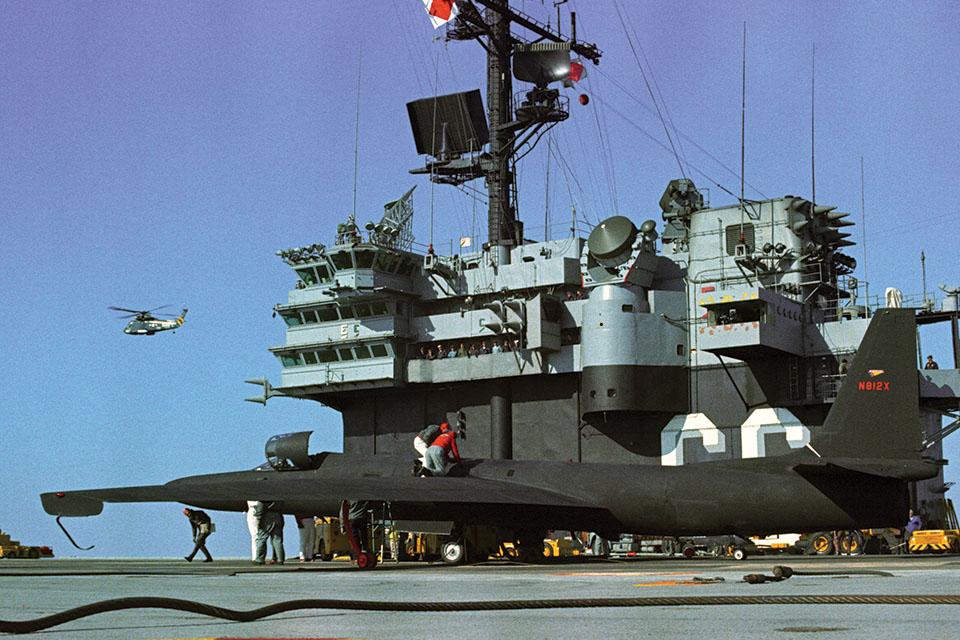
Another U-2 challenge was dealing with fuel balance. Nearly all its fuel was carried in wet-wing sealed cavities that extended to within six feet of the tips. Depending on how it fed to a central sump, the fuel had to be pumped back and forth to keep the airplane in trim, which meant the U-2 had no single howgozit fuel gauge. A simple fuel totalizer showed the exact amount of fuel consumed, but it required being set to the amount of fuel on board at the beginning of a mission, which assumed knowing exactly how much fuel remained at the end of the previous mission. Errors could—and did—cascade.
One fatal U-2 accident was caused by a pilot disengaging the autopilot in preparation for hand-flying an approach and landing. He failed to notice that the airplane was badly out of trim because of a fuel-pump problem, and the autopilot had been increasingly compensating for the imbalance. When the A/P relinquished control, the heavy wing dropped and the resulting roll caused the airframe to fail.
U-2 fuel itself was a bit of a problem. Ordinary jet fuel would have boiled off and evaporated at the U-2’s extreme altitude, so Kelly Johnson called on his friend Jimmy Doolittle, who had become a vice president of Shell Oil. Doolittle committed to developing a low-volatility, low-vapor-pressure fuel that smelled like lighter fluid; Lockheed consequently designated it LF-1A.
A small number of U-2s were fitted with aerial-refueling receptacles. Air-to-air gassing was tried, sometimes with disastrous results. It’s one thing to maneuver a 9G fighter into trail behind a tanker, but the U-2 was stressed to only 2.5 positive Gs, so even the briefest encounter with a KC-135’s wingtip vortices could, and twice did, tear it apart.
But why would anybody want to refuel in flight an airplane with a single pilot already at the limit of his endurance? So Lockheed built several carrier-capable U-2s with tailhooks, thinking that at least there could be a crew change as part of at-sea refueling. It was interesting that the difficult-to-land U-2 had little trouble making traps aboard a carrier, though its wingspan made careful attention to the centerline crucial. Perhaps all that conventional U-2s needed was a tailhook and some arresting wires rather than talk-down coaches in Camaros bringing the airplane to what all too often resulted in a groundloop anyway.
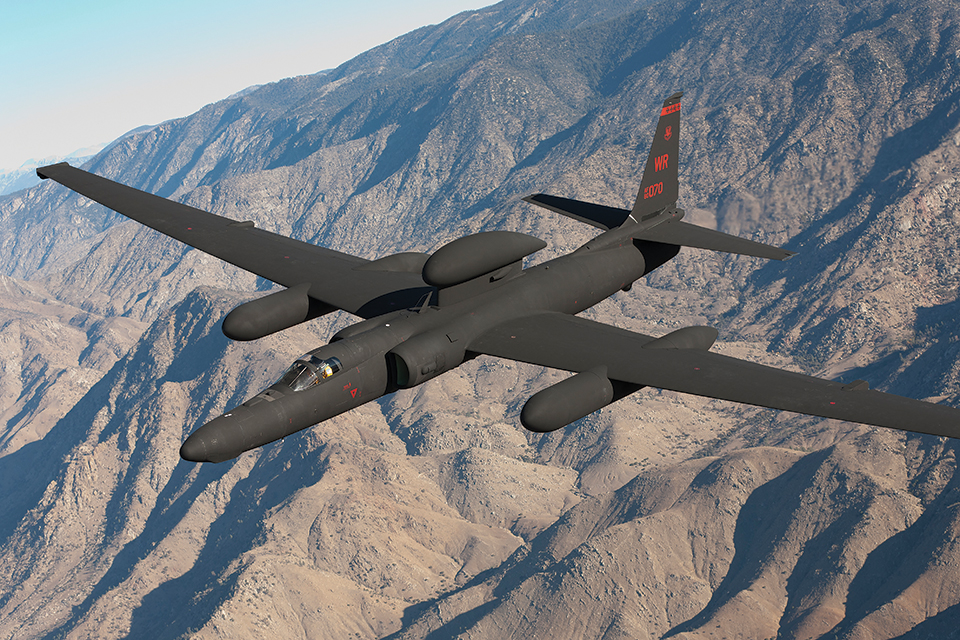
The U-2 is the only U.S. military aircraft ever to re-enter production, which happened in the mid-1960s after 40 of the original 55 U-2s had been lost to accidents and shootdowns. Johnson had been prescient enough to squirrel away all the U-2 tooling and jigs in a warehouse, and when more U-2s were needed, he was ready to fire up the Skunk Works production line again.
Some say the U-2R and re-engined U-2S constitute a third reopening of the U-2 line, but they are entirely different airplanes despite their resemblance to the original U-2. Nevertheless, the U-2S is universally referred to today as “the U-2.”
Although the basic U-2 concept is already 60 years old, the U-2S and its descendants will be with us for the foreseeable future. As sophisticated as spy satellites are, it takes time to alter their orbit if reconnaissance of a specific site is needed. Nor can satellites fly complex tracks; they are limited to straight-line surveillance. U-2s can be deployed rapidly and fly whatever course is needed.
GET HISTORY’S GREATEST TALES—RIGHT IN YOUR INBOX
Subscribe to our HistoryNet Now! newsletter for the best of the past, delivered every Monday and Thursday.
It should come as no surprise then that the Air Force recently admitted U-2s are operating against ISIS militants in Iraq and Syria, probably flying out of the United Arab Emirates. Nothing else, they have decided, can as effectively track and find the rebels amid tens of thousands of square miles of desolate desert, not even the big Northrop Grumman RQ-4 Global Hawk spy drones.
John Seaberg, the Boston boffins and even Kelly Johnson couldn’t have imagined what they started.
For further reading, contributing editor Stephan Wilkinson recommends: Spyplane: The U-2 History Declassified, by Norman Polmar; Lockheed U-2, by Jay Miller; and Dragon Lady: The History of the U-2 Spyplane, by Chris Pocock.
This feature originally appeared in the January 2017 issue of Aviation History. Subscribe here!

